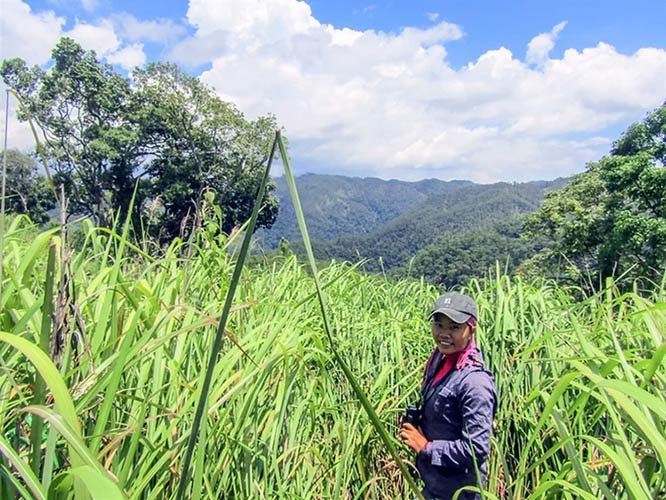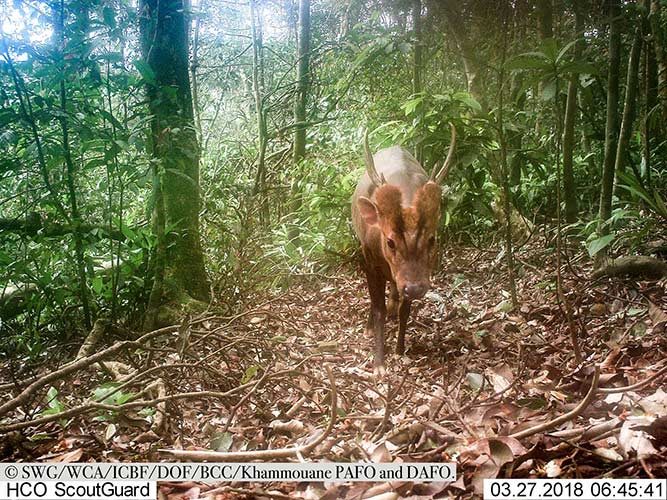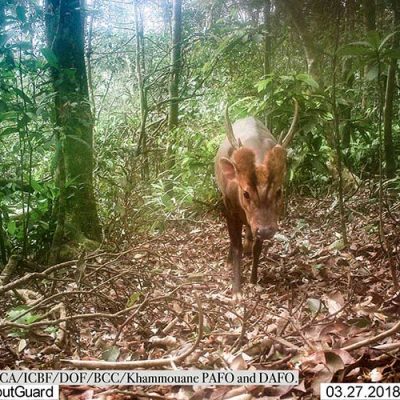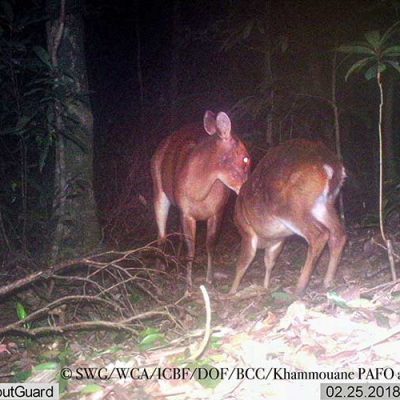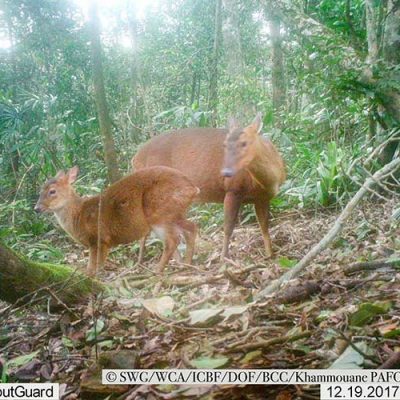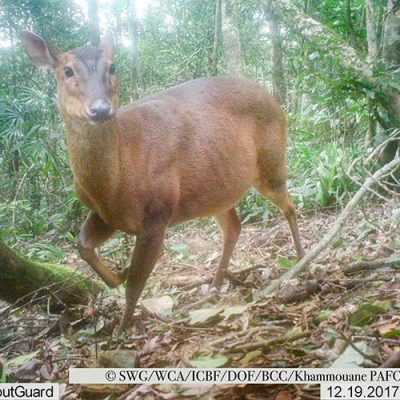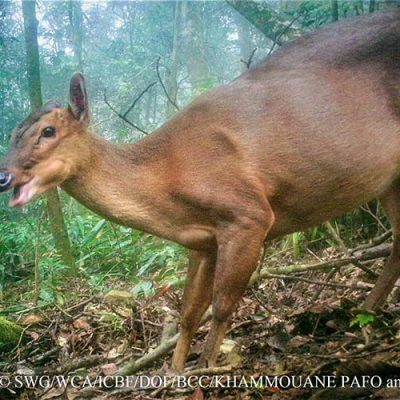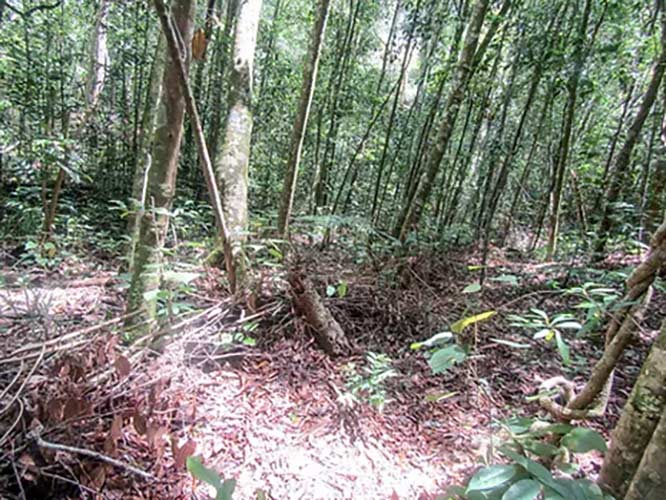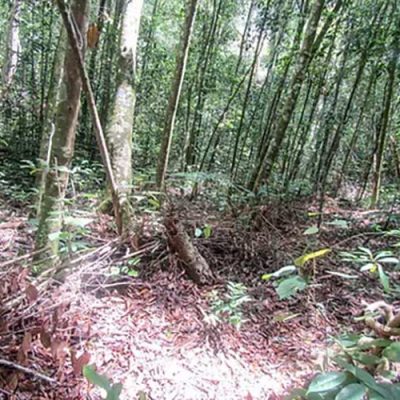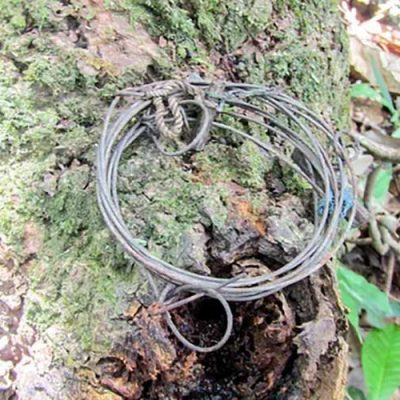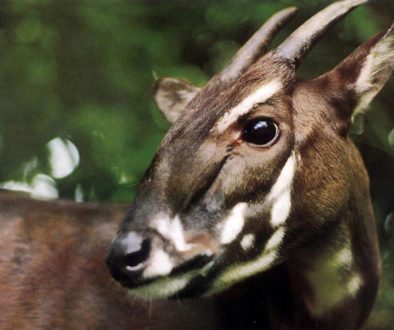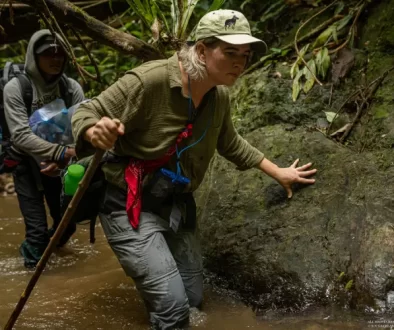How many snares are too many? Preventing decline of species in the Annamite Mountains…..
How many snares are too many? Preventing declines of species threatened by snaring in the Annamite Mountains
Minh Nguyen, PhD Student, Colorado State University, USA and Conservationist, Vietnam
The current situation
In the 1990s, biologists were stunned by a series of discoveries of large mammals in the Annamite Mountains of Lao PDR and Vietnam. These included two of the world’s rarest ungulates, the Saola [Pseudoryx nghetinhensis] and the Large-antlered Muntjac [Muntiacus vuquangensis]. Clearly, the tropical forests of the Annamites, an area rich in rare and endemic species, are of intense conservation significance. Unfortunately, unsustainable hunting that utilizes snares is devasting ground dwelling mammal populations across much of the region.
To date, among the mammals and birds endemic to the Annamites, the Saola is most threatened; the Large-antlered Muntjac is next. Since both species became known to science in the early 1990s, their numbers have declined dramatically; both are considered Critically Endangered by the IUCN.No live Saola has been detected since 2013, and only remains of an animal purportedly killed in 2016 have been seen since. Expert opinion and local knowledge suggest that throughout the Annamites it is highly likely that some scattered individuals persist. Large-antlered Muntjacs are no longer found at most sites where they were known in the 1990s; today at only two sites in the entire Annamite region have they been found relatively commonly by camera traps. Although the Large-antlered Muntjac does not yet hover on the brink of extinction, as does the Saola, its future also looks bleak. There has been little recognition of the plight of this species among stakeholders; no strong voice calls for conservation solutions to preserve it until recently, with the formation of the IUCN Large-antlered Muntjac Working Group, and, most recently, the initiation of a ground breaking project to tackle the biggest threat to Large-antlered Muntjac in the wild – wildlife snaring.
The problem — widespread wildlife snaring
The wildlife trade is booming, and its network is becoming more sophisticated. Rural communities that still practice a subsistence way of life are often wrongly blamed. However, the attractive profits from trading derivatives of exotic species, that include bears, primates, wild cats and ungulates, brings hunters to the Annamites from far and wide. Vietnamese hunters scour the forests across the border in Lao PDR and Vietnamese middlemen frequent rural communities on the forest edge to promote trade. Both the fast-growing economies and the population growth of China, Vietnam and beyond are fuelling demand as the end markets for wildlife products. They also bring huge investments for infrastructure development in and around the Annamites for hydropower dams, mining, and commercial agriculture. This in turn creates networks for traders and increases access to the forests for poachers.
The most devastating snares use cheap, readily available bicycle brake cable that is fabricated into wire nooses. These are set within narrow gaps in fences made of undergrowth. A team of hunters can set hundreds of snares that cover several kilometres stretching through the forest. These traps opportunistically intercept anything that steps on the trigger mechanism, which tightens the wire cable around the animal’s foot or neck.
Snaring has reached almost every corner of the Annamites. Consequently, the Saola, Large-antlered Muntjac and other species have steadily begun to disappear. The potential for huge profits, combined with the simplicity of snaring and the relative low risk of getting caught, fuels this technique. Snares and poachers are difficult to locate; poachers adapt their movements to avoid detection. Resources to employ, train, equip and manage ranger teams to keep up with poachers are limited. Further, in most cases, ranger activities are hampered by uncertainty of whether the patrol effort expended is enough to reverse declines of target species.
How many snares are too many — a solution
One of today’s most essential tools to combat wildlife snaring is to be able to quantify to what level snares must be reduced in order to arrest the decline of a species. To collect snares haphazardly without assessing whether this benefits wildlife is largely futile.
The likelihood of an animal stepping in a snare depends on its movement patterns; home range size, speed and ranging pattern. Ground-dwelling predators of the Annamites such as Dhole and wild cat species are highly susceptible. This is probably because they are fast moving and cover large distances. Likewise, the presumed large range size of the Saola increases the chance that their home range overlaps a snare line. For the Large-antlered Muntjac it may be because they move widely within their home range, thereby utilising more forest area than most other species, which would increase their chances of being captured in a snare.
Forest rangers are our front-line defense. They patrol forests, destroy snare lines, confiscate snare materials and intercept poachers. Like a game of hide and seek, forest rangers hasten to dismantle snare lines even as poachers reconstruct them at other locations. Snares are hard to detect; their lines can be laid faster than rangers can find them, and even the most intensive efforts by patrol teams have not proved to be effective enough to reduce the risk to mammals like the Saola and the Large-antlered Muntjac, which are highly susceptible to this trapping technique. To reverse widespread declines in mammal abundance, conservation managers must calculate how much effort is needed to keep snare levels below devastating thresholds. How many snares are too many? Without this knowledge conservationists are working blindfolded. Yet such information does not exist for any species in the Annamites.
My research in Lao PDR and Vietnam will directly address this question. I will analyze movement patterns of the Large-antlered muntjac using computer modeling, from data collected by satellite tracking of GPS collared individuals, together with other data from camera-trapping and field survey. By combining animal movement parameters with data on snare density and patterns of spatial snare placement in computer simulations, I will be able to determine snaring thresholds, above which muntjac populations will steadily decline toward extinction. In other words, I will identify the tipping point at which the number of snares instigate population decline. My research will enable wildlife managers to determine how much snare collection effort is needed in order to be effective. This research will enable development of improved in situ conservation strategies for law enforcement including design of “core areas” of optimal size for wildlife protection. We will know what works!
Minh Nguyen Bio

My interest is in animal ecology and behavior and how they relate to preservation of species. I intend to use the science behind animal ecology to create meaningful outcomes for wildlife conservation. My interest is reflected in my proposed Ph.D. research on how the snaring crisis affects the Large-antlered Muntjac. My study will engage local communities and management authorities, and it will help them align and optimize wildlife management strategies and strengthen their commitment to wildlife conservation. My project will create opportunities for students who are devoted to our wildlife heritage and will challenge them to find their own conservation paths.
Further Reading from Minh:
Berger, J. and Nguyen. M. (August 3, 2020). “The Large-antlered muntjac — Southeast Asia’s mystery deer (Commentary).“ Mongabay.
Herzl, R. (December 30, 2019). “Meet 2019 WCN Scholar Minh Nguyen“. WCN Wildlife Conservation Network.
Nguyen, M. (2020). “Was ist das Schicksal des wenig bekannten Riesenmuntjak? (What is the fate of the little-known giant muntjac?)” Zoologische Gesellschaft für Arten- und Populationsschutz e.V. (ZGAP) 2020-2.
Nguyen, M.“The snaring disaster and optimistic solutions for in situ wildlife conservation in Vietnam and Laos“. Conservation Leadership Programme. Retrieved March 11, 2021.
Suggested References:
Bennette, E.L., Robinson, J.G. 2000. “Hunting of wildlife in tropical forests: implications for biodiversity and forest peoples.” Biodiversity series: impact studies. The World Bank’s Environment Department.
Harrison, R.D., Sreekar, R., Brodie, J.F., Brook, S., Luskin, M., O’Kelly, H., Rao, M., Scheffers, B., Velho, N. 2016. “Impacts of hunting on tropical forests in Southeast Asia.” Conservation Biology 30: 972-981.
Le Trong Trai, Dang Thang Long, Phan Thanh Ha, Le Ngoc Tuan. 2003. “Hunting and Collecting Practices in the Central Truong Son Landscape.” Central Truong Son Initiative Report No. 7. WWF Indochina, Hanoi, Vietnam.
Nijman, Vincent. 2010. “An overview of international wildlife trade from Southeast Asia.” Biodiversity Conservation 19: 1101–1114.
O’Kelly H.J. 2013. Monitoring conservation threats, interventions and impacts on wildlife in a Cambodian tropical forest. PhD dissertation. Imperial College, London, and Institute of Zoology, London.
Timmins, R.J., Duckworth, J.W., Robichaud, W., Long, B., Gray, T.N.E. & Tilker, A. 2016. Muntiacus vuquangensis. The IUCN Red List of Threatened Species 2016: e.T44703A22153828. http://dx.doi.org/10.2305/IUCN.UK.2016-2.RLTS.T44703A22153828.en.
Timmins, R.J., Hedges, S. & Robichaud, W. 2020. Pseudoryx nghetinhensis (amended version of 2016 assessment). The IUCN Red List of Threatened Species 2020: e.T18597A166485696. https://dx.doi.org/10.2305/IUCN.UK.2020-1.RLTS.T18597A166485696.en.
Timmins, R.J. 2018. “Assessment of the Saola conservation potential and protection effectiveness of the Nakai – Nam Theun NBCA.” A report to the Watershed Management Protection Authority of Nakai – Nam Theun NBCA and the Saola Working Group.
UNODC. World Wildlife Crime Report 2020. United Nations Office on Drugs and Crime, 2020.
Wilkinson, Nicholas. 2016. Effects of five years of snare removal patrols on snaring in the Thua Thien Hue – Quang Nam Saola Landscape, an analysis of data collected by forest guard patrols.

